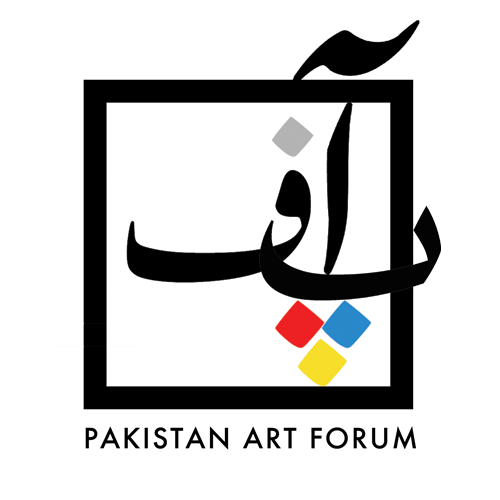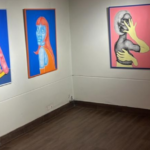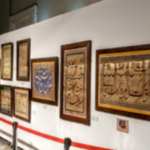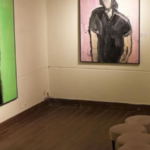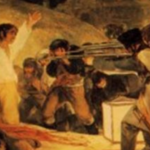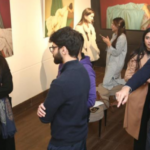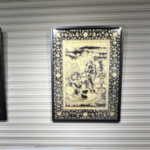1. Ali, tell us about your about yourself; how old are you, where do you come from, where are you studying and about your art education?
My name’s Muhammad Ali Khan, and I was born and raised in Southern Asia, specifically Pakistan. Throughout my life, I have moved between two cities, Lahore and Rahim Yar Khan, but eventually settled in Lahore for my studies. There, I completed my A-Levels and pursued my art education at Lahore Grammar School Johar Town. Currently, at 18 years old, I am furthering my academic journey by pursuing a law degree at the University of Essex, UK, along its respective program courses.
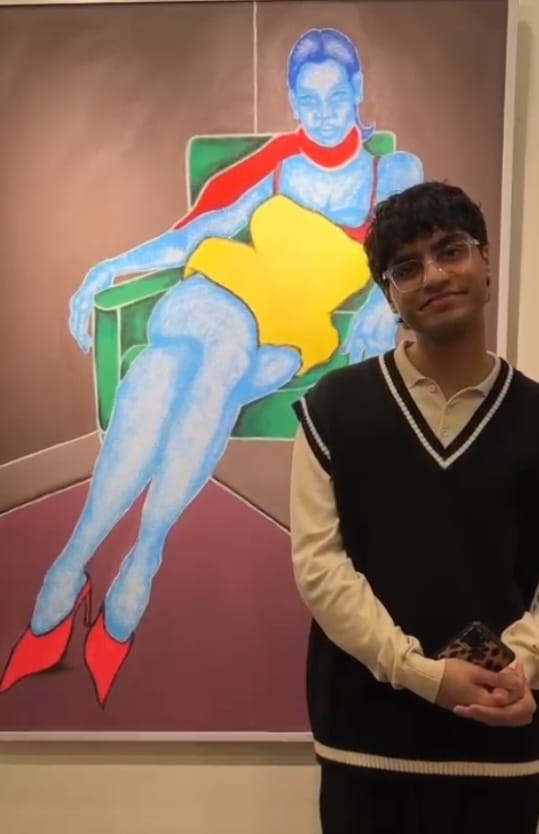
2. How would you define your art style?
My art style is vibrant, bold, and captivating. It’s something that demands attention and stands out prominently. While it leans towards contemporary expression, the fictional alter egos and characters that come to life on my canvas hint of an old soul. My work is deeply influenced by my observations of the lack of vibrancy and color in art, particularly in societies where traditional art dominates, like some parts of Pakistan. For me, my art style serves as more than just a medium; it is a movement for change, a catalyst for evolution. Everything included on the canvas is for a reason. The narratives within my pieces often stem from my own memories or imagined scenarios that my younger self might have experienced. Sometimes, my work challenges taboos; other times, it embodies soul and sound, resonating with emotions and stories.

3. What are your favorite mediums to work with? And why?
Tricky question, I’m not someone that likes to stick to one medium. My artistic journey is fluid. I enjoy experimenting and switching between different materials and mediums, but my work heavily relies on oil pastels and acrylics, as they create a sense of commonality and help shape my distinct style. However, when I’m not working, I explore other mediums as well. If I had to choose a favorite, it would be acrylic paints. They’re quick-drying, easy to layer, and perfectly align with my impatient personality. I also love how effortlessly they blend, making them incredibly versatile. Most people are surprised when I say this, but in my opinion, acrylics are far superior to oil paints!
4. Who are your inspirations in the art world globally?
My most profound artistic inspiration comes from the global mastermind himself, Vincent van Gogh. His technique, style, and use of color have fascinated me for as long as I can remember. I love paying tribute to his compositions and brushstrokes whenever possible. It’s the way he used to capture and observe such details in this world on a canvas that made me gain awareness. I’m also in love with Frida Kahlo’s work. Frida fascinated me with her storytelling and contemporary input. Especially, for being based in history Frida managed to portray her thoughts effortlessly. I’m inspired by how brave and capturing her work is.
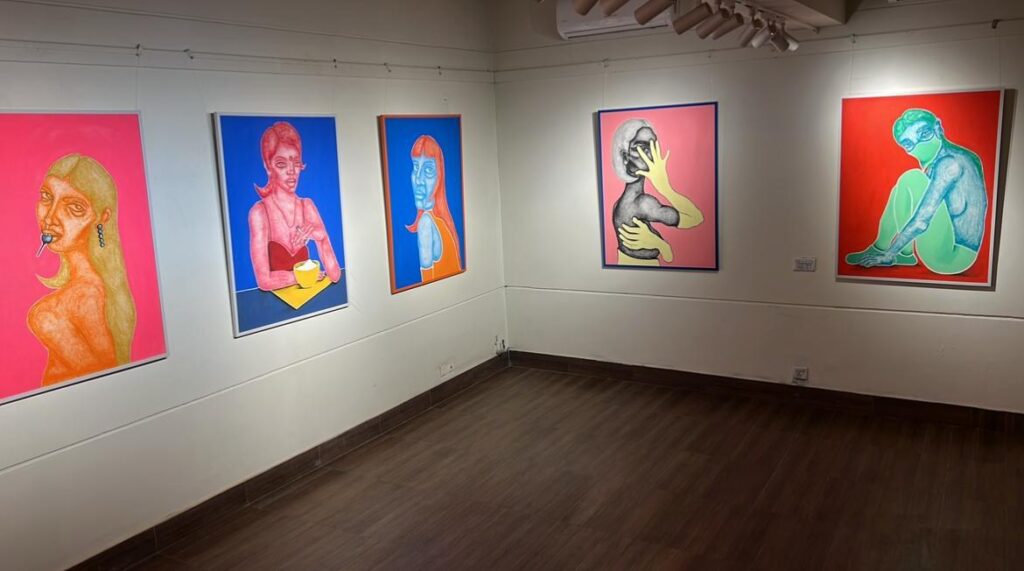
5. Which Pakistani artists’ work do you look up to?
In recent years, I’ve found myself deeply inspired by artists like Salman Toor and Komail Aijazuddin. Both these artists are based in/have a connection to Pakistan. Salman’s work captivates me with its unique composition, distinct style, and the colour green they incorporate. The way each piece feels so chaotic yet utterly brilliant is something I admire. Inclusivity and queer incorporation in general just played a vital role for me in their work. As for Komail, his fearless use of color and expressionism is mesmerizing, each painting is vibrant and narrative. The iconography in such contemporary terms has been a major inspiration for me as well.
6. Tell us about the premise of your first solo exhibition? What is the concept?
My work for the solo exhibition is contemporary in a compelling way, where every stroke of vibrancy tells a distinct story. My art is a journey toward self-acceptance, guiding individuals through intricate labyrinths that symbolize the challenges of identity, trauma, war, sexuality, and personal conflicts within oneself. Each path is painted differently, highlighting the beauty of the struggle itself. Each fictional alter ego or the “character” battles through these mazes, eventually reaching a state of peace and acceptance, much like me myself. I have struggled with identity, fitting in and being different in his stereotypical Pakistani society, conservative to its peak. I use these a-typical characters to portray every memory, every story he can to the viewers to outlive the mentality of not normalising differentiation yet. Through my work, I romanticise uniqueness and so-called “Taboo” subjects by restricted childhood access to these topics through the use of bold, solid colors that externalize inner turmoil, making emotions tangible on the canvas. Yet, at the core of my work is a simple yet profound message of moving on. Through acrylic paints and oil pastels, I further enrich my storytelling, using textures and mediums to solidify the layered narratives of each experience in my exhibition.
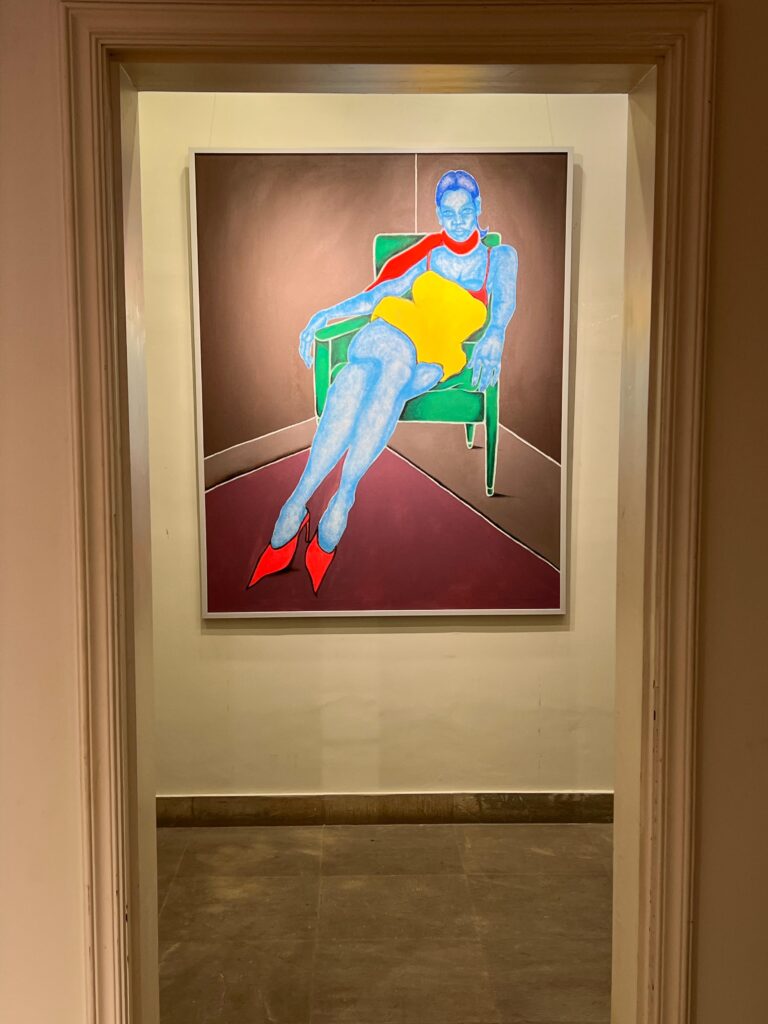
7. How important is experimentation for you in your work?
Experimentation definitely plays a role in my artistic process, but only to a certain extent. If I push experimentation beyond what feels natural, it risks disrupting my art style. I prefer to maintain a consistent art style, ensuring that both my audience and I remain familiar with its essence. However, I do allow room for exploration within certain elements, such as gradients, props, expressions, and textures, rather than completely changing my approach. A full shift in style wouldn’t align with my artistic vision, so I’d say experimentation holds a 50-50 balance in shaping the significance of my work.
